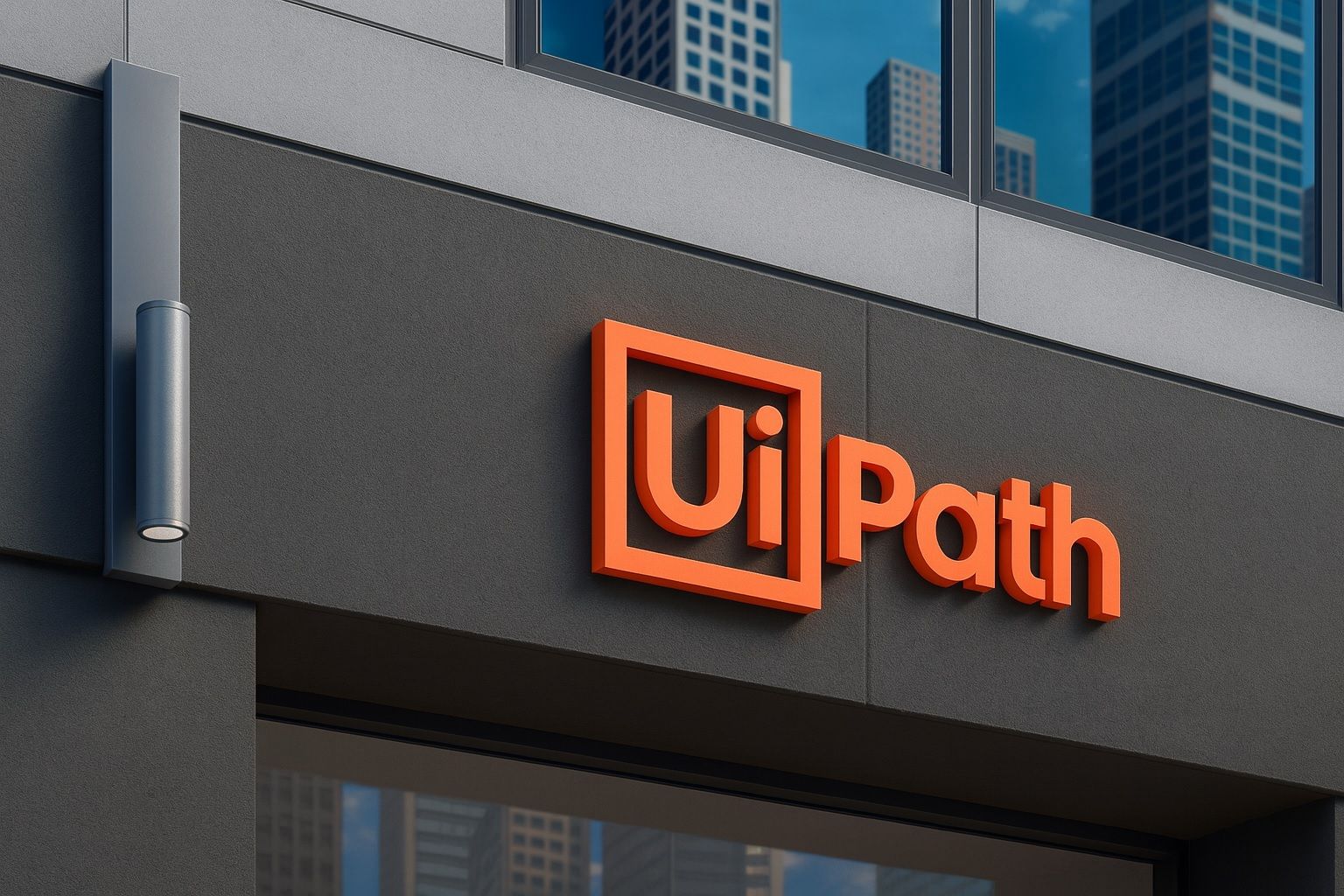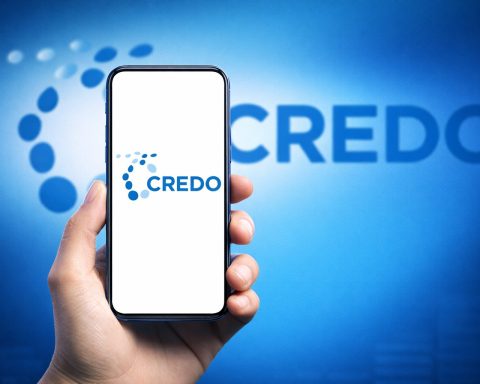- Stock price: UiPath (NASDAQ: PATH) has surged in late October, trading in the low-$13s (near its 52-week high of ~$16) [1]. Shares jumped about 21% intraday on Sept. 30 (to $15.18) after major AI partnership announcements, and closed that day at $13.38 [2]. The stock had dipped to ~$9–10 over the summer but rebounded sharply on upbeat earnings and AI momentum [3].
- Earnings: In Q2 FY2026 (quarter ended July 31, 2025) UiPath beat estimates – revenue rose 14% year-over-year to $362 million and annual recurring revenue (ARR) hit $1.723 billion (up 11%) [4]. Notably, UiPath swung to a small GAAP profit ($1.6M) versus an $86M loss year-ago [5]. Free cash flow also turned positive (about $45M) [6]. Management raised full-year guidance, citing “improved execution” and strong demand for its AI-powered platform [7].
- AI partnerships: At its September FUSION 2025 conference, UiPath unveiled major AI collaborations – including a ChatGPT connector (OpenAI), voice-driven bots via Google’s Gemini, on-premise AI support with NVIDIA, and data integration with Snowflake’s Cortex AI [8]. These deals – plus new AI-driven products – position UiPath as a hub in the enterprise AI ecosystem beyond traditional RPA [9].
- Product innovations: UiPath also rolled out cutting-edge AI features. For example, ScreenPlay is a new “out-of-the-box” agent that builds UI automations from natural-language descriptions [10]. Its Intelligent Xtraction & Processing (IXP) document AI (launched earlier in 2025) was just named a Gartner “Leader” in intelligent document processing [11]. Enhanced AI governance (new agent “guardrails,” PII masking, audit trails, and even ISO/IEC 42001 AI certification) give enterprises more confidence in deploying these tools.
- Analysts & outlook: Wall Street is cautiously optimistic. The consensus rating on PATH is “Hold,” with a 12‑month target around $13.30 (only ~5–8% upside) [12]. Price targets span roughly $10 (bear case) to $18 (bull case) [13]. Notably, Morgan Stanley recently raised its target from $12 to $15, citing higher AI-driven growth potential [14], while others (e.g. DA Davidson at $12) remain more conservative pending consistent execution [15]. Analysts acknowledge that AI could open a much larger market for UiPath – but they’re waiting to see if the new AI initiatives translate into faster bookings [16].
Stock Performance and Recent Trading
UiPath shares have rallied sharply on a string of positive headlines. In late September, stock jumped 21% intraday (from ~$12.56 to $15.18) when the company announced its new AI partnerships [17]. It closed that session at $13.38, near its 52-week peak, and has since traded in the low-$13s [18]. This follows a summer lull (shares had sunk to roughly $9–10 amid macro worries) and reflects renewed investor confidence in UiPath’s AI-driven strategy [19]. As of mid-October, PATH is hovering around $13–14 – well above its recent lows and approaching previous highs.
Intraday moves in late October have been modest. For example, on Oct. 23 PATH was essentially flat, trading around $13.50, as technology stocks broadly held steady. (By comparison, the S&P 500 tech index was up about 0.5% that day.) Over the past few trading days, UiPath has treaded near its recent highs, buoyed by strong earnings momentum [20]. Volume has picked up somewhat, suggesting that Wall Street is paying close attention to whether PATH can sustain its rally.
Strong Q2 Results Drive Bullish Sentiment
UiPath’s recent quarterly report (Q2 FY2026, ended July 31) exceeded expectations and cemented a turnaround in profitability [21]. Revenue of $362.3 M was up 14% YoY, and ARR climbed 11% to $1.723 B [22]. Crucially, the company swung to its first GAAP profit ($1.6 M) since going public, helped by cost cuts and robust bookings. Non‑GAAP EPS of $0.15 beat estimates by $0.07 [23], and free cash flow turned positive ($45 M vs. negative prior year) [24]. Management noted “improved execution” and raised its full‑year revenue guidance on the strength of rising demand for its AI‑powered platform [25]. Analysts highlight that UiPath achieved this profit swing by reducing costs (~$40 M) while simultaneously boosting revenue (~$45 M) – an $85 M improvement that suggests the path to sustainable profitability might finally be in sight [26] [27].
This beat-their-eyes report has had a noticeable impact on analyst sentiment. TS2 Tech notes that after the earnings release, some firms updated their models to reflect stronger growth and improved margins [28]. Credit Suisse and Morgan Stanley have expressed more confidence in UiPath’s execution, while others remain cautious until growth stabilizes. Overall, the earning surprise — combined with the AI partnership news — has fueled the stock’s recent strength.
Strategic AI Partnerships and New Products
Behind the stock jump are several high-profile deals and product innovations. At its September FUSION 2025 event, UiPath announced collaborations with OpenAI, Google, NVIDIA and Snowflake to infuse generative AI into its platform [29]. For example, it rolled out a direct ChatGPT integration (via OpenAI) for creating automation logic, partnered with Google to build voice‑activated bots on Gemini, and enabled secure on‑prem NVIDIA AI models for regulated sectors [30]. The Snowflake deal connects UiPath to cloud data for real‑time AI triggers. These partnerships are “not merely incremental upgrades but foundational shifts toward AI‑driven workflows,” analysts say [31] – essentially moving UiPath from classic RPA into a new “agentic automation” paradigm.
In parallel, UiPath released cutting-edge products. Its new ScreenPlay agent can build entire UI automations from natural‑language instructions [32]. As UiPath’s CPO explained, ScreenPlay “understands your intent, translates it into multi-step plans, and executes them autonomously across interfaces” [33]. That means non-technical users might soon describe a task in plain English (or any language) and let UiPath auto-generate the robotic workflow. The company also enhanced its IXP (Intelligent Xtraction & Processing) document AI, which was recognized as a Gartner Magic Quadrant Leader this year [34]. New features like AI-powered schema generation and validation bots in IXP are designed to streamline data workflows that used to be very manual.
These product announcements — paired with new AI governance tools (out-of-the-box “agent guardrails,” PII masking, unified audit logs, and full ISO 42001 certification for responsible AI) — reinforce UiPath’s vision of end-to-end, enterprise‑grade AI automation. Together, they aim to convert UiPath’s platform into an all-in-one hub for “agentic” AI bots and classic RPA, a strategy analysts believe could give UiPath a lasting edge in the market.
Analyst Commentary and Outlook
Wall Street analysts have reacted with a mix of enthusiasm and caution. The consensus rating on PATH is currently “Hold” [35]. The average 12-month price target is about $13.30, implying only modest upside from current levels [36]. Targets range from roughly $10 on the low end (bearish outlook) up to about $18 on the high end (bullish) [37]. For context, UiPath’s stock hit the mid-$16s recently, so most analysts see a ceiling in the mid-$ teens barring further breakthroughs.
Notably, some major firms have taken fresh stances. Morgan Stanley just upped its target from $12 to $15 (with an “Equal-weight” rating), citing higher growth potential from the AI initiatives [38]. Others are more conservative: D.A. Davidson, for instance, keeps a $12 target (Neutral) and emphasizes the need for “more consistent execution” before getting bullish [39]. In general, analysts agree that UiPath’s move into AI and its large existing base (20,000+ enterprise customers) could unlock a much bigger addressable market. But most caution that they will need to see these new AI products and deals translate into faster revenue bookings before getting fully behind the stock [40].
In the near term, Ts2.tech notes the stock’s recent rally has already priced in many positives, so upside may be limited if growth disappoints [41]. Some bank models still project modest gains: for example, one published estimate suggests UiPath could grow revenues ~8–10% annually over the next few years, reaching roughly $1.9 billion by 2028 (about an 8.6% CAGR) [42]. Assuming the higher $1.9B target, consensus earnings-per-share forecasts imply PATH might earn roughly $0.50–0.60 per share by 2028. At a still-generous multiple (say 15×), that implies a mid-$8 stock price – underscoring that analysts see significant risk if UiPath fails to accelerate growth.
In the mid-term, however, structural tailwinds could help. UiPath remains the market leader with ~35% RPA share, and the overall sector is expected to boom. IDC predicts global RPA spending will more than double to ~$8.2 billion by 2028 [43]. If UiPath can maintain or expand its share while adding new AI-driven revenue streams, many analysts believe it can compound sales growth in the high single digits or low double digits annually. In this scenario, Wall Street’s mean targets (mid-$13s) could prove conservative, and a move back toward the high teens is possible. Still, given current valuations and the mixed signals on execution, the 12–24 month outlook is for moderate gains rather than another parabolic surge.
Verdict: Moderate Upside, Watch AI Execution
In summary, UiPath’s stock rally is well-founded by tangible developments: record revenues and profits, plus pioneering AI partnerships and products [44] [45]. Market experts agree that PATH is a leader in “hyperautomation,” but they also stress that converting the new AI hype into sustained growth is critical. For now, most analysts recommend holding PATH and observing its execution on AI. If UiPath can deliver on its ambitious roadmap (making AI automations work seamlessly at scale), there could be further upside. But if progress falters or macro headwinds return, the stock may give back gains. Investors will be closely watching the next earnings report and adoption rates of the new AI offerings.
Sources: UiPath investor releases and analyst reports; market data and financial news summaries [46] [47] [48] [49] [50] [51] [52].
References
1. ts2.tech, 2. ts2.tech, 3. ts2.tech, 4. ts2.tech, 5. ts2.tech, 6. ts2.tech, 7. ts2.tech, 8. ts2.tech, 9. ts2.tech, 10. www.uipath.com, 11. www.uipath.com, 12. ts2.tech, 13. ts2.tech, 14. ts2.tech, 15. ts2.tech, 16. ts2.tech, 17. ts2.tech, 18. ts2.tech, 19. ts2.tech, 20. ts2.tech, 21. ts2.tech, 22. ts2.tech, 23. ts2.tech, 24. ts2.tech, 25. ts2.tech, 26. ts2.tech, 27. ts2.tech, 28. ts2.tech, 29. ts2.tech, 30. ts2.tech, 31. ts2.tech, 32. www.uipath.com, 33. www.uipath.com, 34. www.uipath.com, 35. ts2.tech, 36. ts2.tech, 37. ts2.tech, 38. ts2.tech, 39. ts2.tech, 40. ts2.tech, 41. ts2.tech, 42. www.ainvest.com, 43. ts2.tech, 44. ts2.tech, 45. ts2.tech, 46. ts2.tech, 47. ts2.tech, 48. ts2.tech, 49. ts2.tech, 50. ts2.tech, 51. www.uipath.com, 52. www.uipath.com







